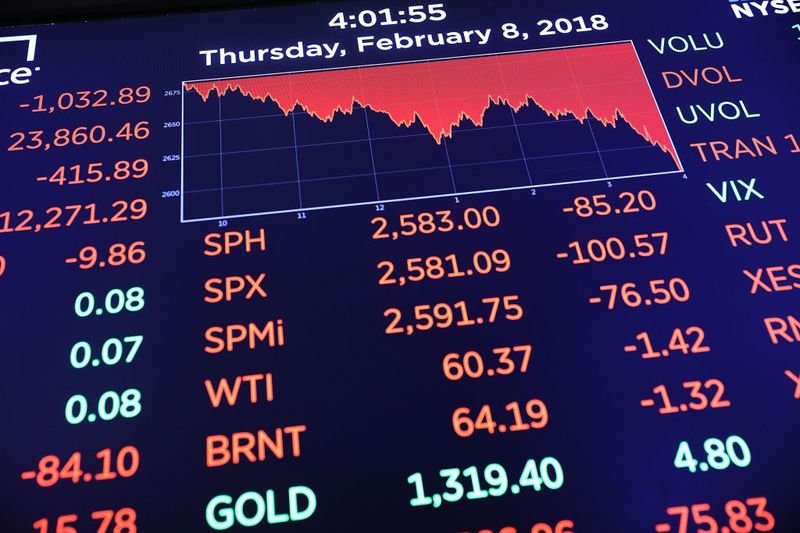In May, Warren Buffet announced that he had bought another 75 million shares in Apple, but most other investors think that with the current downtrend in the volatile market, buying stocks can be risky.
The stock market’s underwhelming performance, despite strong corporate earnings, could be caused by a host of different reasons including escalating trade tensions between U.S. and China, rising interest rates and inflation. But one sector has sprung up as a new winner in a decade-running bull market even as the conditions become more volatile.

The utility sector has grown by 6 per cent on average in the last month in comparison to S&P’s 0.6 per cent growth
Utility Sector Dominates
The Utility sector, a typical underperformer in the stock market, has surprisingly overtaken the broader market, increasing by 6 per cent in the last month with some companies even growing by 10 per cent in comparison to S&P 500 which has only gained 0.6 per cent.
According to CNBC experts, some of the leading utility companies in the stock market include Duke Energy Corp. (DUK), NextEraEnergy (NEE), Dominion Energy Inc. (D), The Southern Company (SO), Exelon Corp. (EXC), American Electric Power Company Inc. (AEP), Xcel Energy (XEL) and Consolidated Edison Inc. (ED).
High flying tech giants like Apple, Amazon and Facebook have attracted plenty of investment activity over the past years, but as stock market becomes more bearish in nature, investors are quickly turning their attention towards defensive stocks whose growth is independent of any external conditions. Utility companies are considered part of a secular growth sector having certain defensive characteristics protecting it from market swings and downturns.
Jonathan Golub, the equity chief at Credit Suisse, says that investors are becoming increasingly cautious about the market due to fears of impending recession triggered by rise in trade tensions and protectionism. A decline in yields would inevitably drive investors away from bond and financial proxies, but the geopolitical and economic conditions would have a very little effect on the utility sector’s growth.
Chantico Global CEO, Gina Sanchez, says that the Utilities Select Sector SPDR Fund, XLU, has grown consistently over the last 14 trading sessions and the uptick is likely to continue in the future as more and more investors funnel funds into stable growth sectors.
NextEraEnergy (+ 7.8%)

Xcel Energy and NextEraEnergy are leading companies in the renewable energy sector with total energy capacity exceeding 24 gigawatts
Wind power is quickly on its way to becoming the leading source of renewable energy in the United States that will provide electricity to 7 per cent of the country’s homes and businesses by 2019.
NextEra Energy is a leading renewable utility company with total energy capacity exceeding 24 gigawatts by the end of 2017. The increasing global commitment to clean energy has turned NEE into one of the best utility stocks to invest in.
Over the past few years, the company has invested billions of dollars in increasing its energy capacity by installing solar panels and wind turbines. NextEra has the largest share in United States’ solar and wind capacity, and it plans on adding an additional 1.3 gigawatts of solar and 4.1 gigawatts of wind capacity by the end of 2018.
The Southern Company (+ 10.8%)
Southern Company (SO) is another major utility firm with 9 million customers, an electricity generation capacity of 46 gigawatts and power transmission and distribution network expanding over 200,000 miles.
SO has also invested heavily in natural gas which has allowed shareholders to earn early dividends, encouraging more people to invest in the company. With a current dividend yield of 5.3 per cent, Southern is a blue-chip utility stock that could earn investors a steady stream of income despite the volatility in the market.
Xcel Energy (+ 9.5%)
Xcel Energy (XCL) has over 6.7 gigawatts of wind energy capacity with potential to expand its wind farms along the American wind corridor, allowing the company to increase capacity factor to 50 per cent in comparison to the national average of 37 per cent.
Even though XCL stocks struggled in the final quarter of 2017, the company bounced back in the beginning of 2018, reporting solid performance in the first quarter. Its earnings per share jumped from $0.47 a year ago to $0.57 in the first quarter of 2018. The earnings are expected to grow by 5 to 6 per cent every year as the company inches closer to achieving $34.5 billion rate base in 2022.










